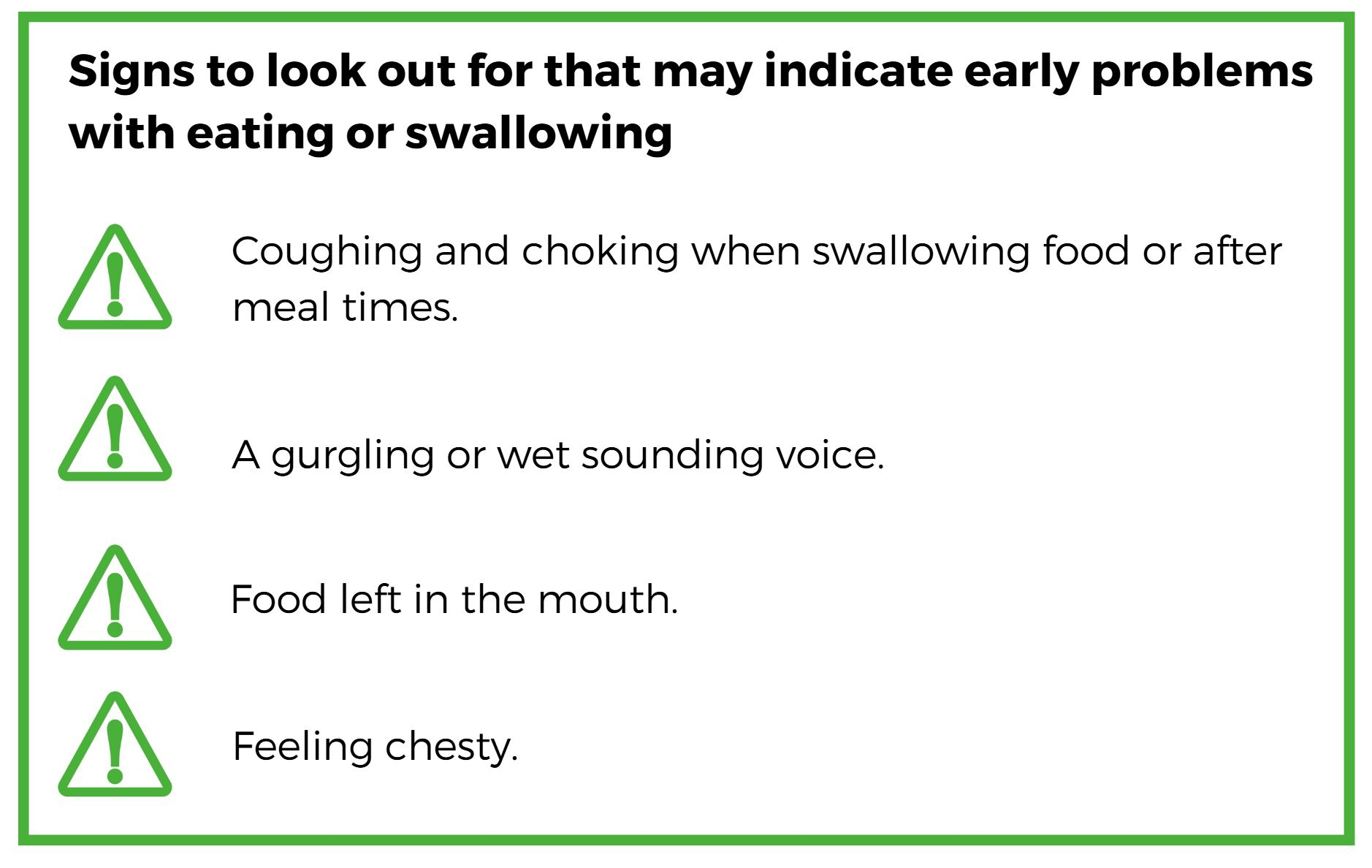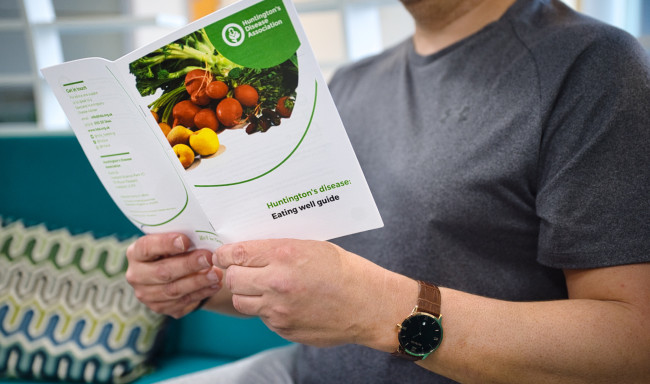People living with Huntington’s can be more at risk of choking on food due to issues with swallowing.
As Huntington’s progresses, muscles in the face and throat become weaker. This can lead to problems with swallowing as muscles in the face and throat are used to chew food, hold food and drink in the mouth, pass food and drink to the back of the throat, and then down the throat to swallow.
Many people with Huntington’s can experience the following:
- Difficulty placing liquid food in the mouth, closing lips together to keep food in the mouth, chewing food or holding the drink in the mouth in preparation to transfer the food or drink to the back of the throat.
- Difficulty with co-ordination, timing and speed of getting food to the back of the throat. Sometimes food or drink may transfer too quickly or too slowly.
- Difficulty with food or drink being efficiently and effectively swallowed and entering the oesophagus and ‘going down the wrong way’ into the airways to the lungs.
It is important to be aware of early changes affecting swallowing and concerns should be raised with a GP or one of our Specialist Huntington's Disease Advisers (SHDAs), who can make a referral to a speech and language therapist (SALT). This can be a particularly distressing and alarming time, so seeking advice from a speech and language therapist will provide reassurance. A speech and language therapist will assess the strength of the muscles in the throat and mouth and will measure ability to swallow. They may recommend foods and drinks which are easier to swallow.

What to expect from a Speech and Language Therapist?
A speech and language therapist will generally start by assessing the level at which someone is struggling with eating, drinking and swallowing. An assessment may involve a discussion around any difficulties experienced when swallowing, a mealtime observation and a swallow assessment.
A swallow assessment is a non-evasive clinical assessment of ‘swallow function’, which measures how food and drink is being chewed and swallowed. If the speech and language therapist identifies swallowing difficulties, they will recommend foods with appropriate consistencies which are considered safe to swallow.
As thickened foods and drinks are easier to control in the mouth and to swallow, they may suggest adding a thickening product to meals to thicken food. This is classified into various degrees of texture modification. Thickening products can be prescribed by a GP.
Foods that may be particularly hard to swallow
- Stringy and fibrous foods, like pineapple, celery and lettuce.
- Foods that have a skin, like peas, grapes and baked beans.
- Mixed consistency foods, like soup with lumps, stewed fruit, mince with thin gravy and muesli.
- Crunchy foods, like toast, crisps and flaky pastry.
- Hard foods, like nuts, seeds and chewy sweets and toffees.
- Husks, like sweet corns and grains.
Making bitesize
Chopping, mashing or mincing food, where possible.
Keeping food smooth
Removing lumps of fruit, vegetables and potato with a fork, masher or stick blender.
Utilising a blender
Using a blender or food processor to mince meat and chicken into smaller, more manageable sizes.
Varying flavours
Mixing up flavours by adding soy sauce, Worcester sauce, tomato ketchup, curry powder, or herbs and spices to savoury dishes, and jam to sweet dishes.
Eating well guide
You can read, download or share our full eating well guide from the link below.






